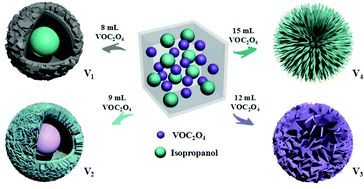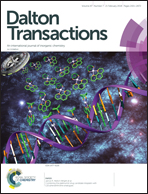A yolk–shell V2O5 structure assembled from ultrathin nanosheets and coralline-shaped carbon as advanced electrodes for a high-performance asymmetric supercapacitor
Abstract
Various V2O5 three-dimensional nanostructures are synthesized using a facile template-free hydrothermal method and evaluated for use as supercapacitor electrode materials. As a result, the yolk–shell structure assembled from ultrathin nanosheets shows the best electrochemical performance, with a specific capacitance of 704.17 F g−1 at 1.0 A g−1 and a high capacity retention of 89% over 4000 cycles at 3.0 A g−1. In addition, a continuous three-dimensional porous coralline-shaped carbon is synthesized from osmanthus and has a large Brunauer–Emmett–Teller surface area of 2840.88 m2 g−1. Then, an asymmetric supercapacitor is developed using the as-prepared yolk–shell V2O5 as a positive electrode and the osmanthus derived coralline-shaped carbon as a negative electrode. This exhibits an energy density of 29.49 W h kg−1 at a power density of 800 W kg−1 with a good cycling performance that retains 90.6% of its initial capacity after 2000 cycles at 3.0 A g−1. Furthermore, two cells in series can easily brightly light up a light-emitting diode (3 V), further demonstrating the great potential of the prepared materials for high-performance supercapacitor devices.



 Please wait while we load your content...
Please wait while we load your content...